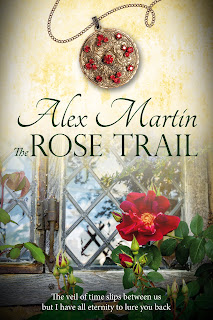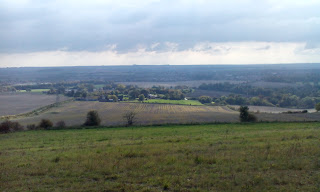The Rose Trail at 99p/cents for limited time!
Month: December 2017
Merry Christmas
Merry Christmas to everyone, especially those who\’ve taken the time and trouble to write a review or tell friends about my work. I appreciate each and every one.
I\’m hoping to publish Woodbine and Ivy at some point in 2018, I\’m about a third of the way in and looking forward to getting back to work early in the new year but for now it\’s time to eat, drink and be merry!
Wishing you all a very happy Christmas and all you desire in the new year.
But for now, have a whiff of my cranberry sauce:
Dreams realised #amwriting
I fulfilled a lifelong ambition on Tuesday. I went back to Devizes where I used to live and took my books into the bookshop there. The Rose Trail is set in Devizes and the historical section is based on the battle of Roundway Down an iconic range of hills above the town. Oliver\’s Castle – which is not named after Oliver Cromwell, who joined the English Civil War after this Royalist triumph – looked even more magnificent than ever, laced with frost. The ground underneath my feet was still frozen and the tiny segments where it had thawed were lethally slippery. I went to the very spot where the Roundheads fell to their deaths and shivered – and it wasn\’t from the bitter wind.
The Katherine Wheel series is also set nearby. We used to live in Erlestoke, just outside Devizes, and the village above its steep valley is called Great Cheverell. These are the two villages that I\’ve named Upper and Lower Cheadle. Cheadle Manor itself is entirely fictional but there was a big estate between the villages. It burned down in World War Two and has now a much more prosaic and sombre role as one of Her Majesty\’s Prisons.
However some of the minor details of the stories do come from real anecdotes from our time there. The book is dedicated to Old Harry for a good reason. A raconteur who mined a rich seam of a life of nearly a hundred years, Harry could tell a yarn like no other. He had a wooden leg, lost – not in the war as you might suspect – but through scything it through while working on the railway sidings and cutting the grass. It was Harry who told me about the village pump being the only water supply – the one that had such a devastating effect on little Florence in Daffodils. He told me how the row of cottage in which we both had little 2 up, 2 down homes shared a tap at the end of the row at first, then one between two – which were still there – and then the great day dawned when they had sinks installed in lean-to kitchens at the back of the cottages. A sink of their own; he still remembered the joy of it.

He\’d lived through it all. As a boy he\’d worked in the walled garden above our cottages. Like everything else it belonged to the estate, and provided it with fruit and vegetables. It must have been glorious in its day, as the beautiful warm red brick walls curved around the southerly slope to catch all the rays. Not easy in such a steep valley. It was a work of art. Harry remembered those walls covered in apricot and peach trees, espalliered against the terracotta clay bricks. As a boy he was a runner, carrying fruit and vegetables up to the big house, across a bridge that had been demolished after the fire in World War Two.
It was Harry who was really the boy who ate half the strawberries by the time he reached the cook at the big house. And it was because of Harry that scales were introduced into the garden so that cook\’s scales matched the weight of the produce before and after it was ferried across!
I look back with great fondness on that time living in that historic village, and not just because both my children were born there. It is a wonderful feeling to know that the story that grew out of that time is now sitting on a shelf in the local market town\’s bookshop.
A heartfelt ambition achieved.
The Women\'s Land Army in #WW2

Today my research focus has shifted to the Women\’s Land Army (WLA). Woodbine and Ivy has three characters\’ points of view. One is in France, another in the WLA and a third has yet to be decided.
I\’ve seen lots of posters for the WLA with young women looking radiantly healthy and full of vim and vigour, pitchfork in hand, the sun shining on their smiling faces.
I\’ve discovered, as did many of them, that the reality was a little more gritty. Unfortunate for many of those ladies, but great inspiration for a story!
I had assumed, incorrectly, that food on a farm would still be abundant during the second World War but the Ministry of Food and Agriculture placed strict restrictions even on farmers. Livestock was drastically reduced, which surprised me, in favour of arable production. A great many wildflower meadows were ploughed up to grow crops like barley and wheat. Hundreds of years of evolution gone.
The land girls worked long hours – 48 per week in the winter and 50 in the summer. They seemed to be a cheerful lot, despite the sceptism they were greeted with on arrival and the physical toll of the work. I read of one woman who had to weed an entire field of thistles – without gloves! Being a gardener myself, I can only imagine the blisters by the end of the day.
Beetroot sandwiches seem to be a staple diet with cheese only eaten once a week. Bread wasn\’t rationed during the war and neither were potatoes so these women ate lots of carbohydrates and little protein – the opposite of health advice today – but they must have burned all of it off doing jobs like mucking out pigsties, heaving wheat sheaves and carrying water. It\’s both inspiring and humbling to see what they went through, far from home, in pretty poor conditions.
Often they slept in barns or outhouses on rough beds made from wood nailed together in a hurry and some dubious mattresses. One woman said she had to shower after a bath as the bath water, never very warm or deep, would be full of hay lice after a day on the threshing machine during harvest. Ugh!
The uniforms seem to have met with general approval; however I was shocked to learn they had to be handed back – even darned socks – at the end of the war. The only item they were allowed to keep was the much-loved overcoat. They were issued with 10 clothing coupons as compensation.
Above is a picture of one Land Army girl in full regalia in one of those seductive posters with a picture of some women doing real work below!

Antidotes
I\’m researching Paris in 1939 during the \’drole de la guerre\’ or the phoney war at the moment. War is a grim subject to dwell on but a necessary part of exploring how people responded to it. I\’ve found it fascinating to discover how my characters react under these sorts of pressures but after several hours of that I need to get out and see a distant view. I\’m so lucky to live where I do on the Gower peninsula and the distant perspective of the sea relaxes my mind and rests my eyes after hours of staring at the computer screen. The days are short but although bitterly cold, they have been sunny this week. Here are a couple of pictures taken just before the sun slips behind the horizon.





